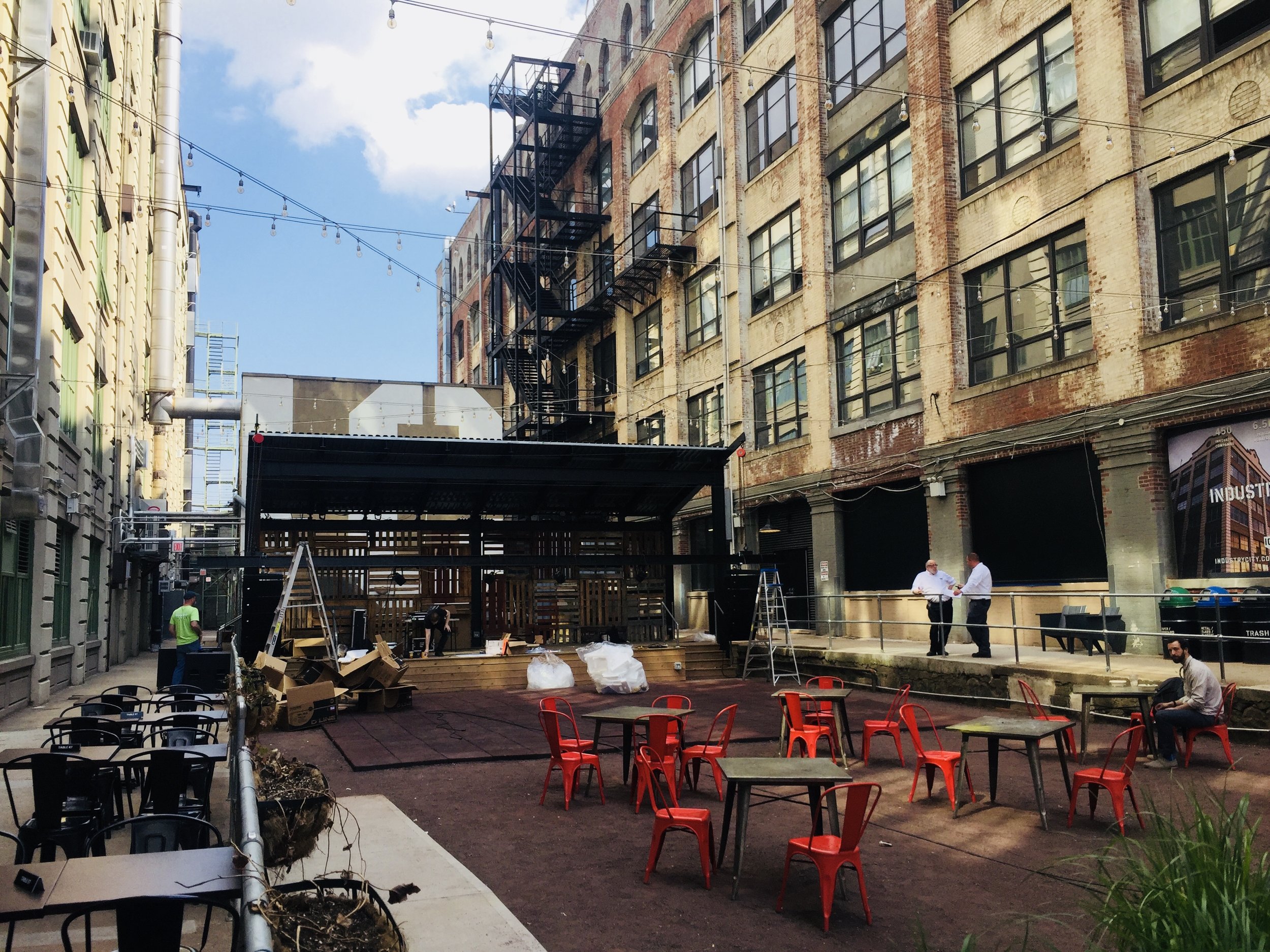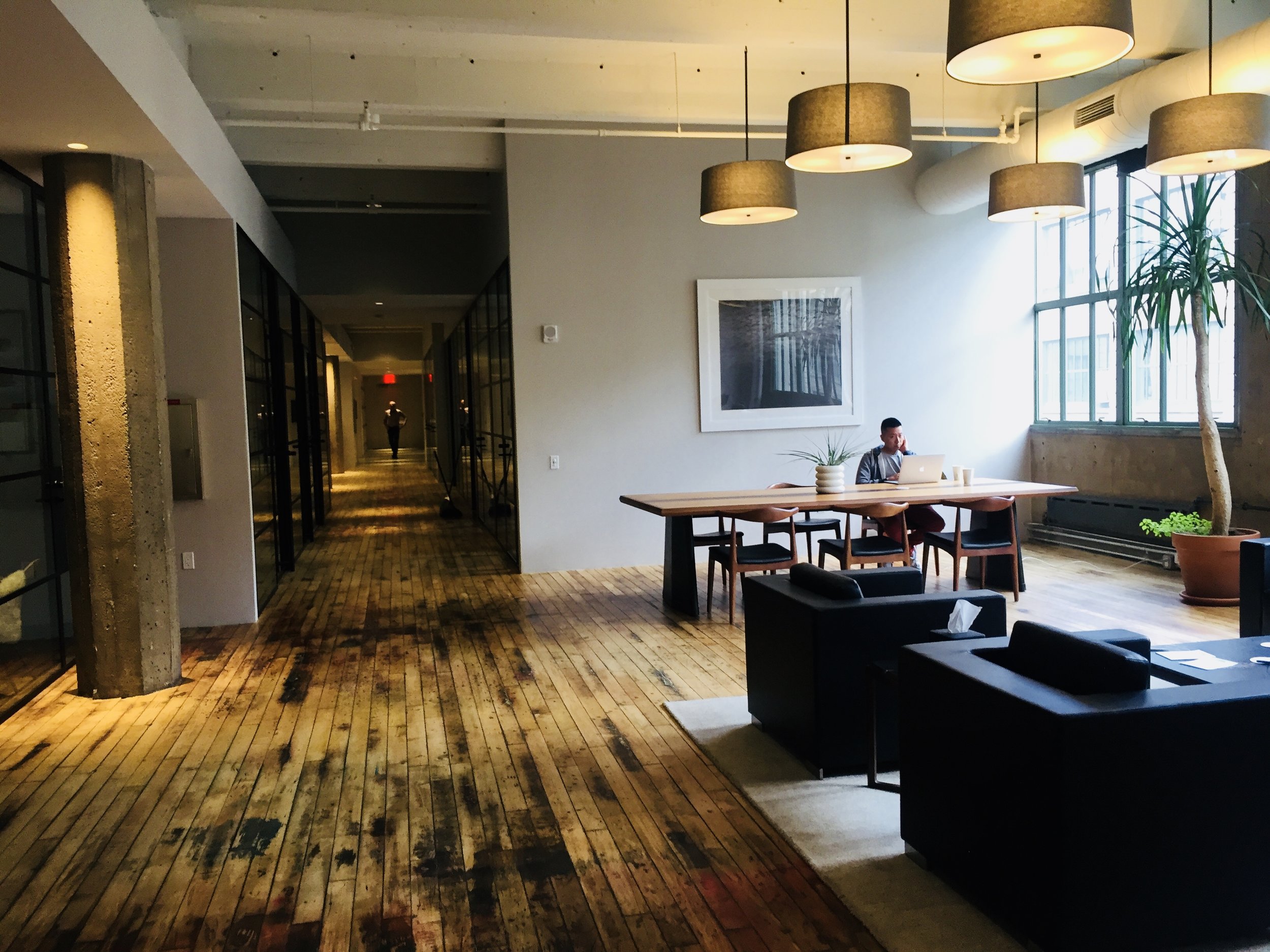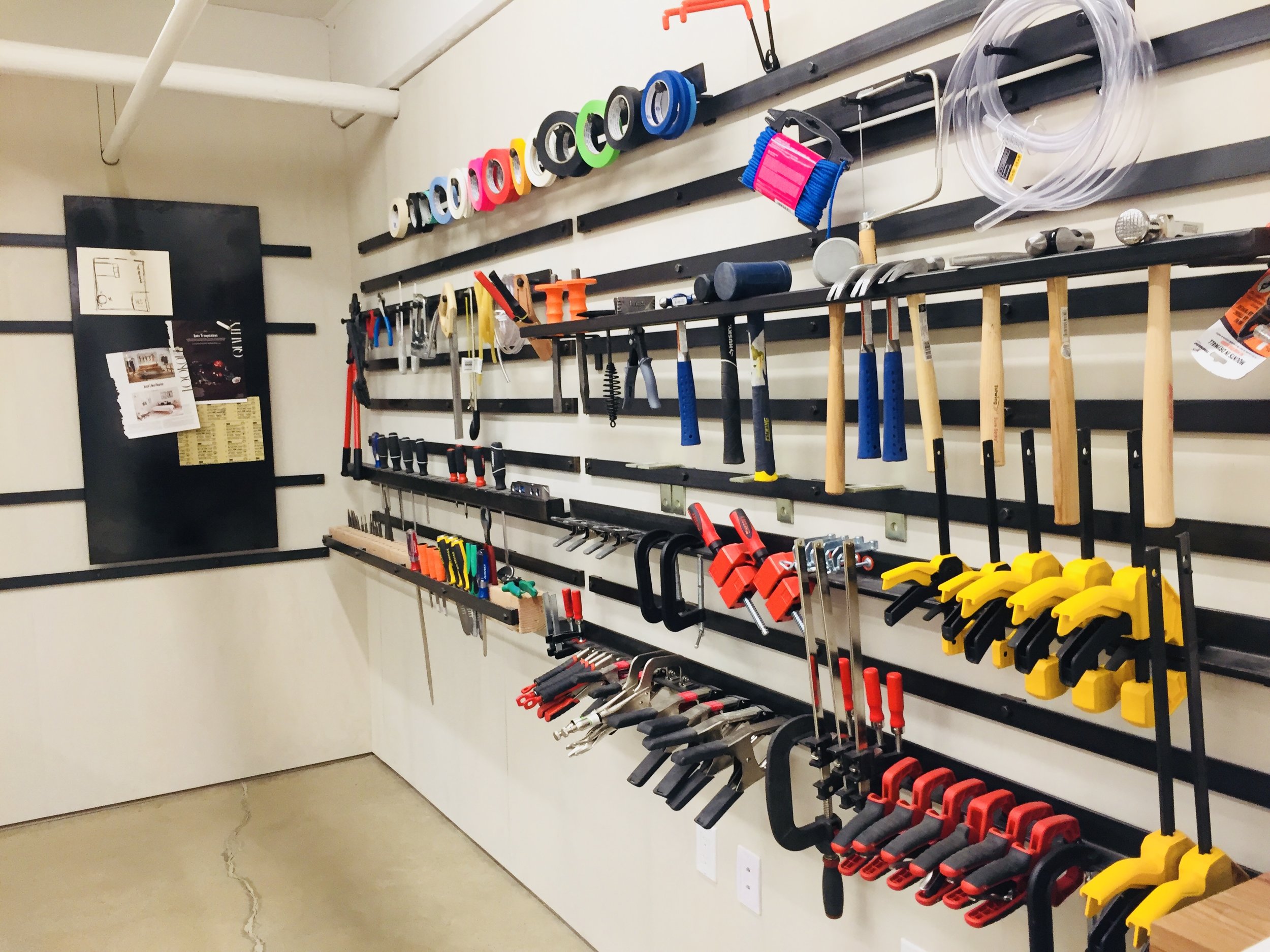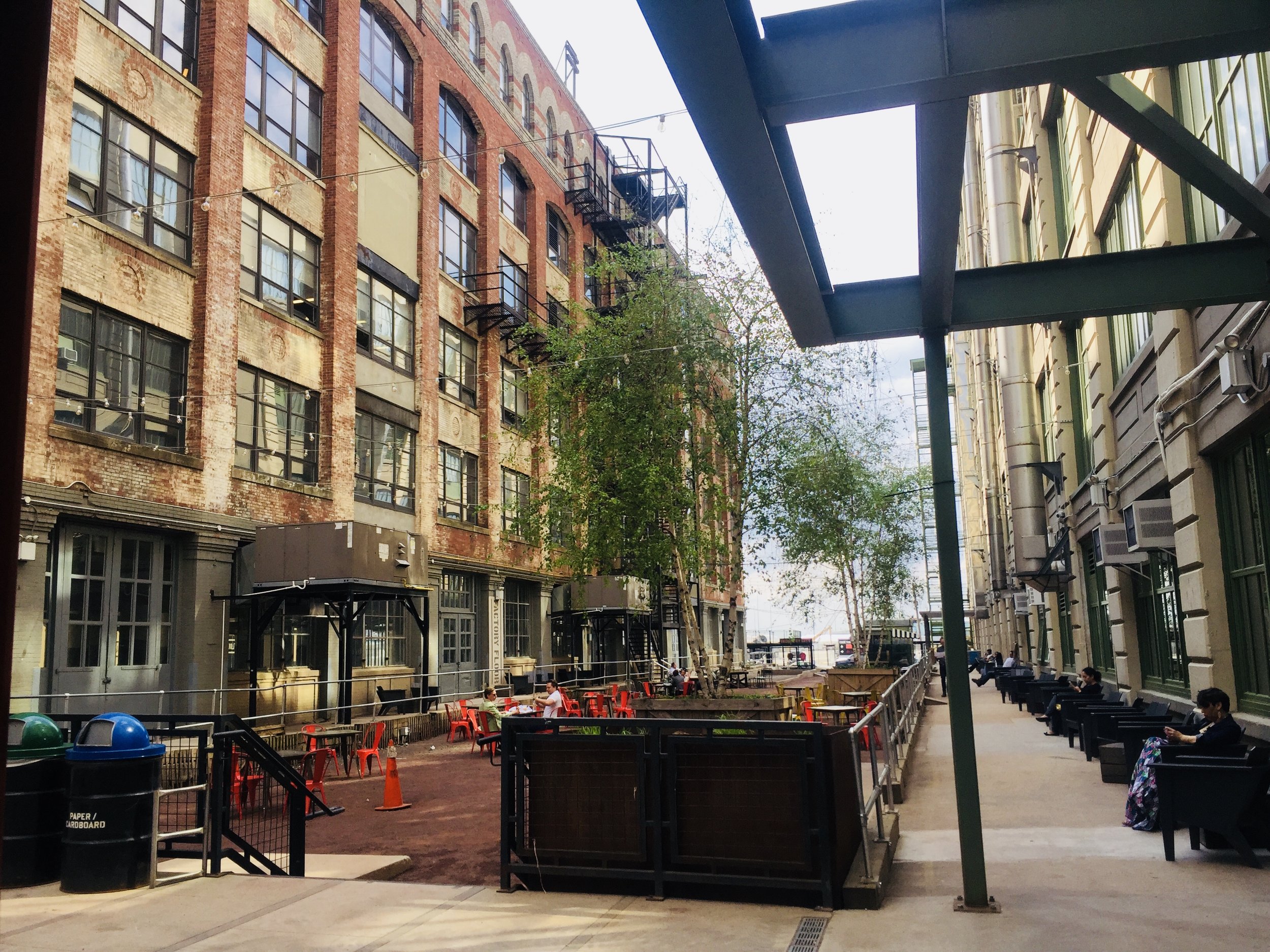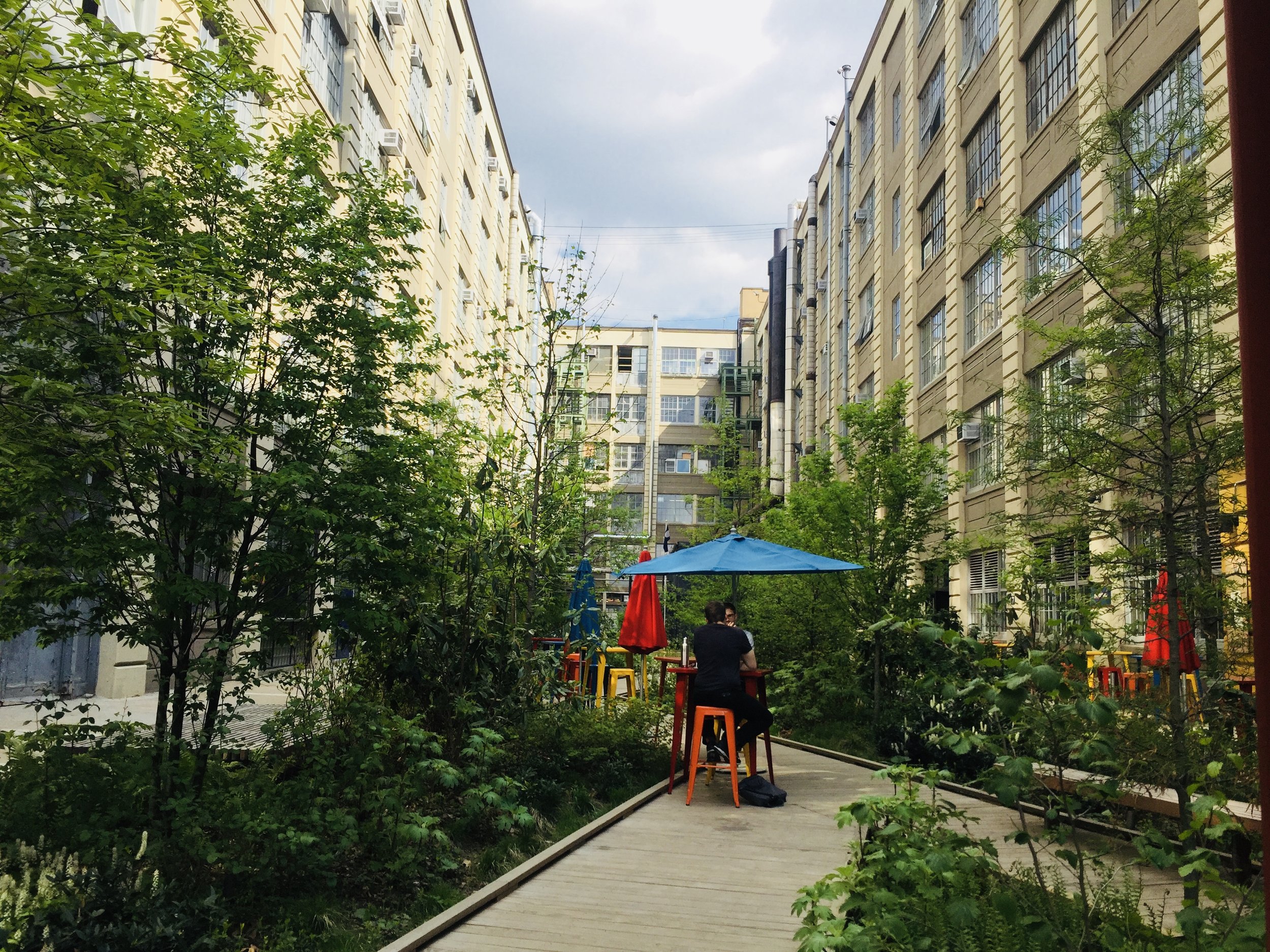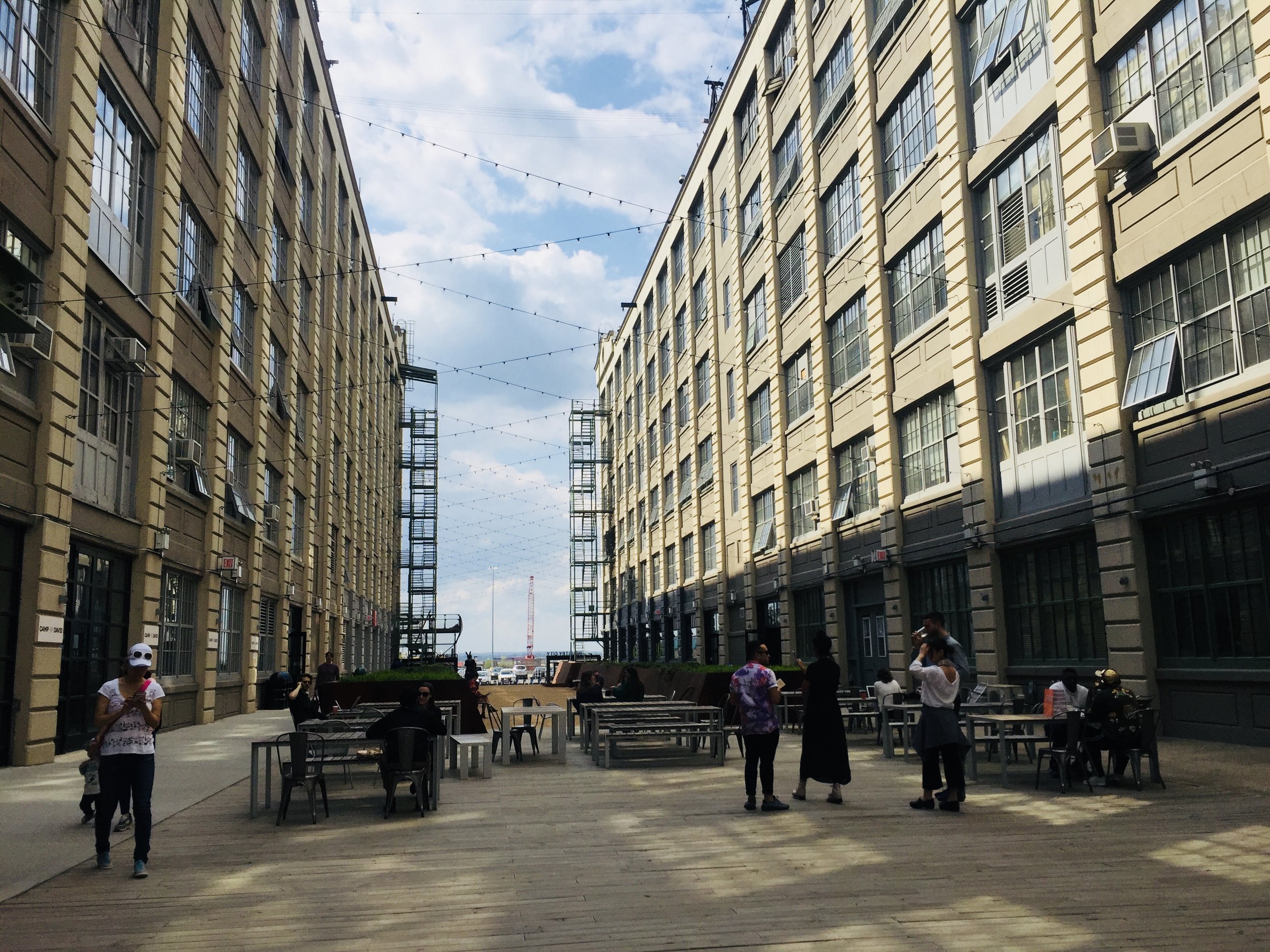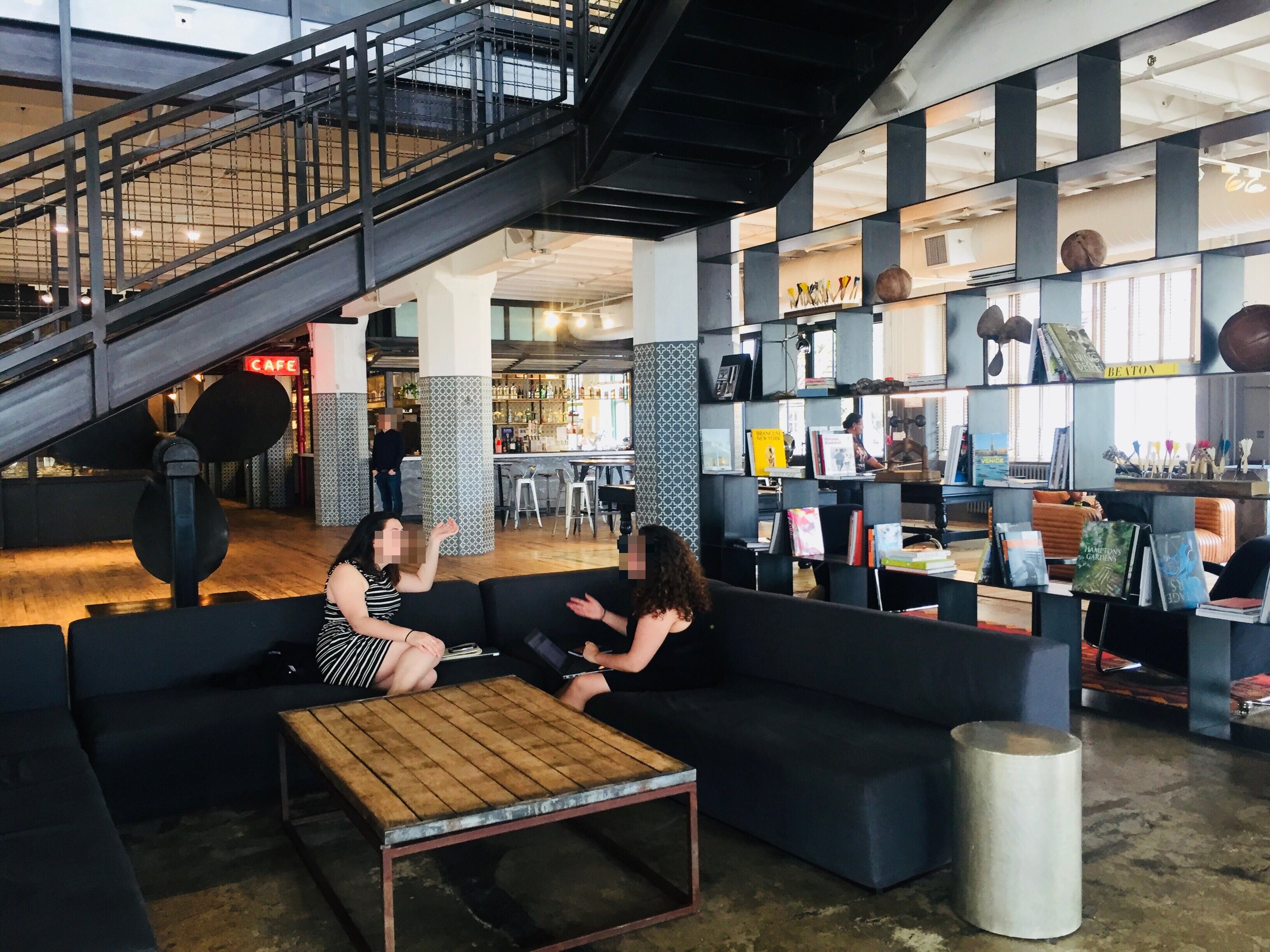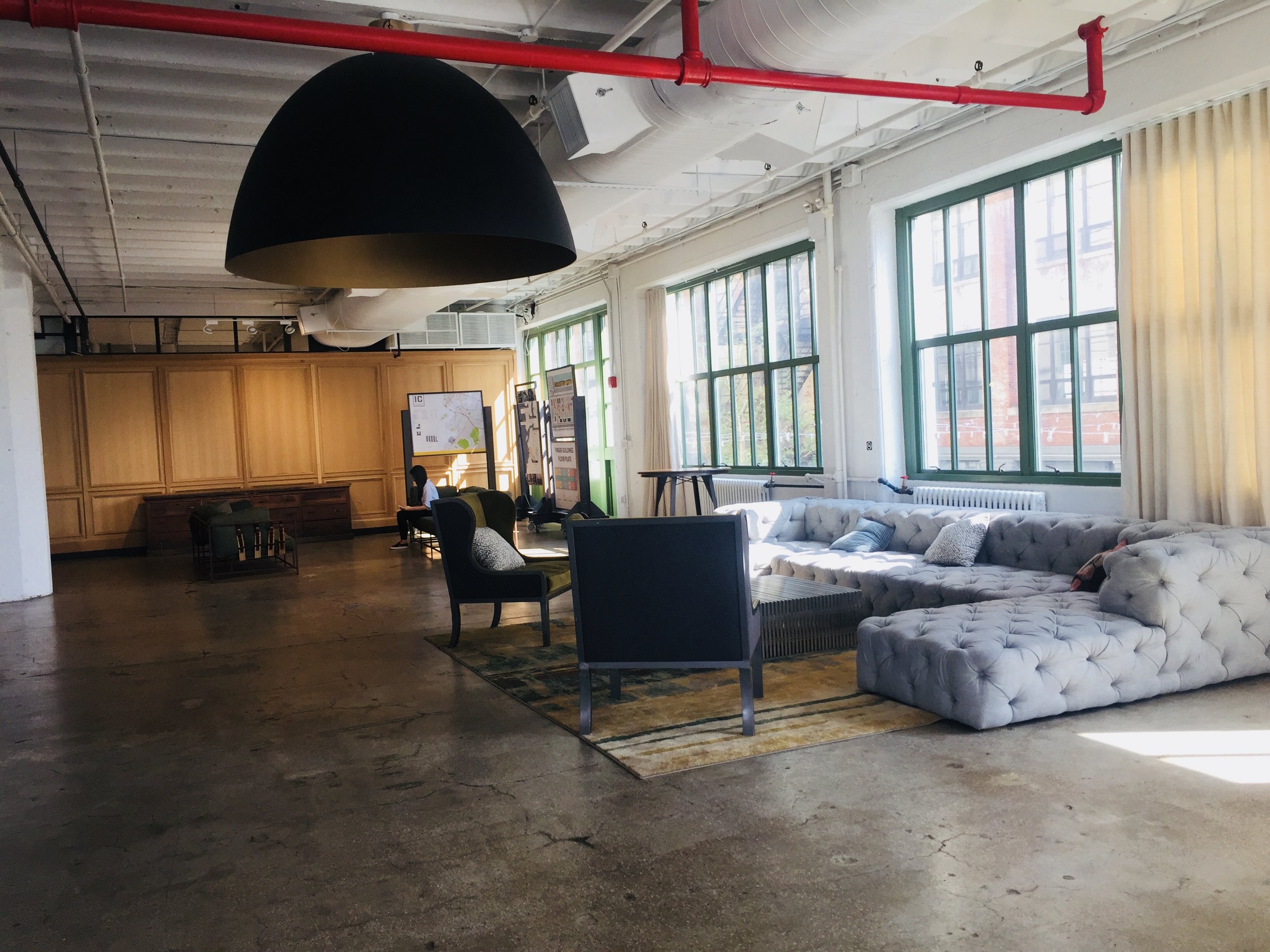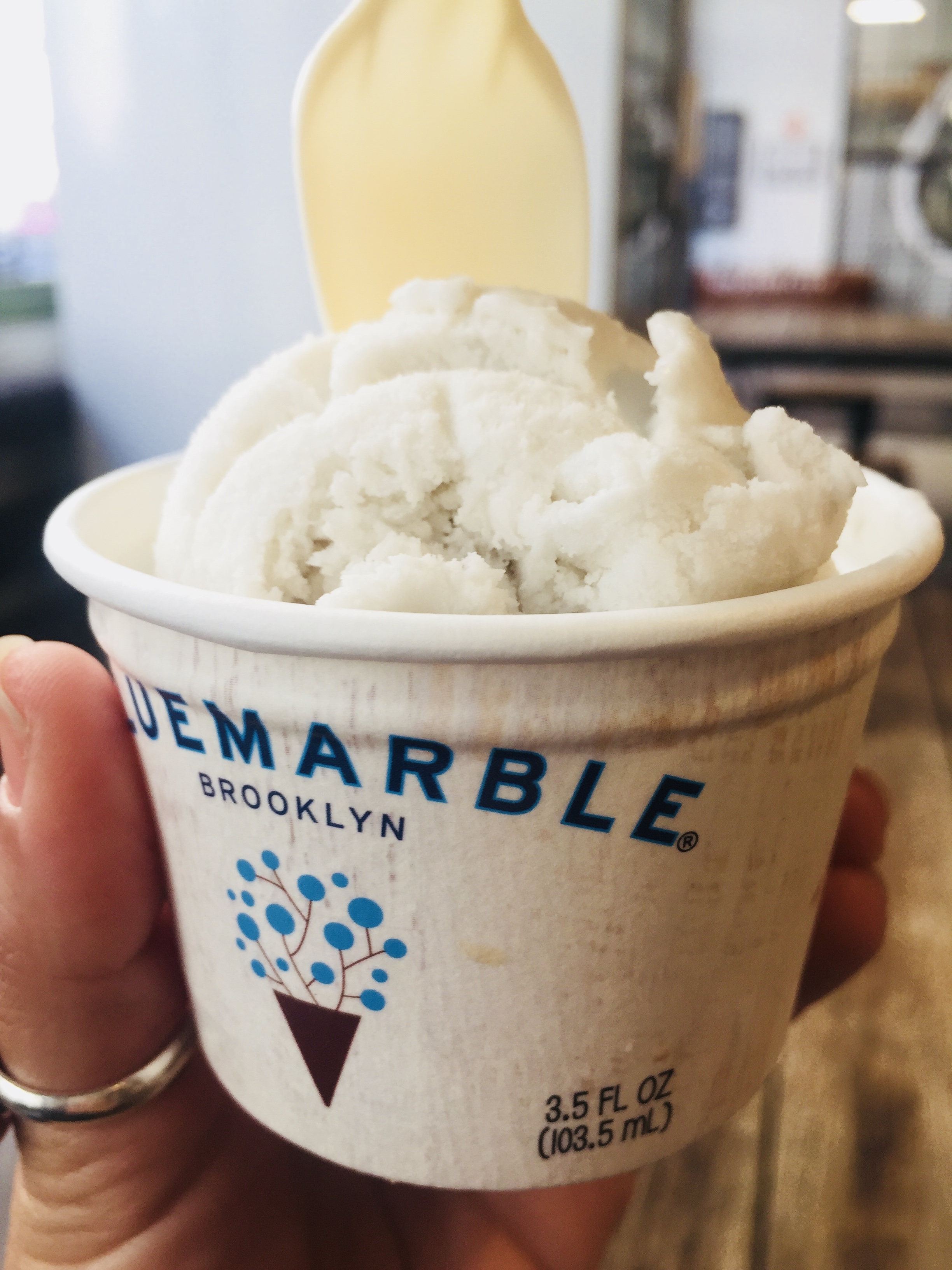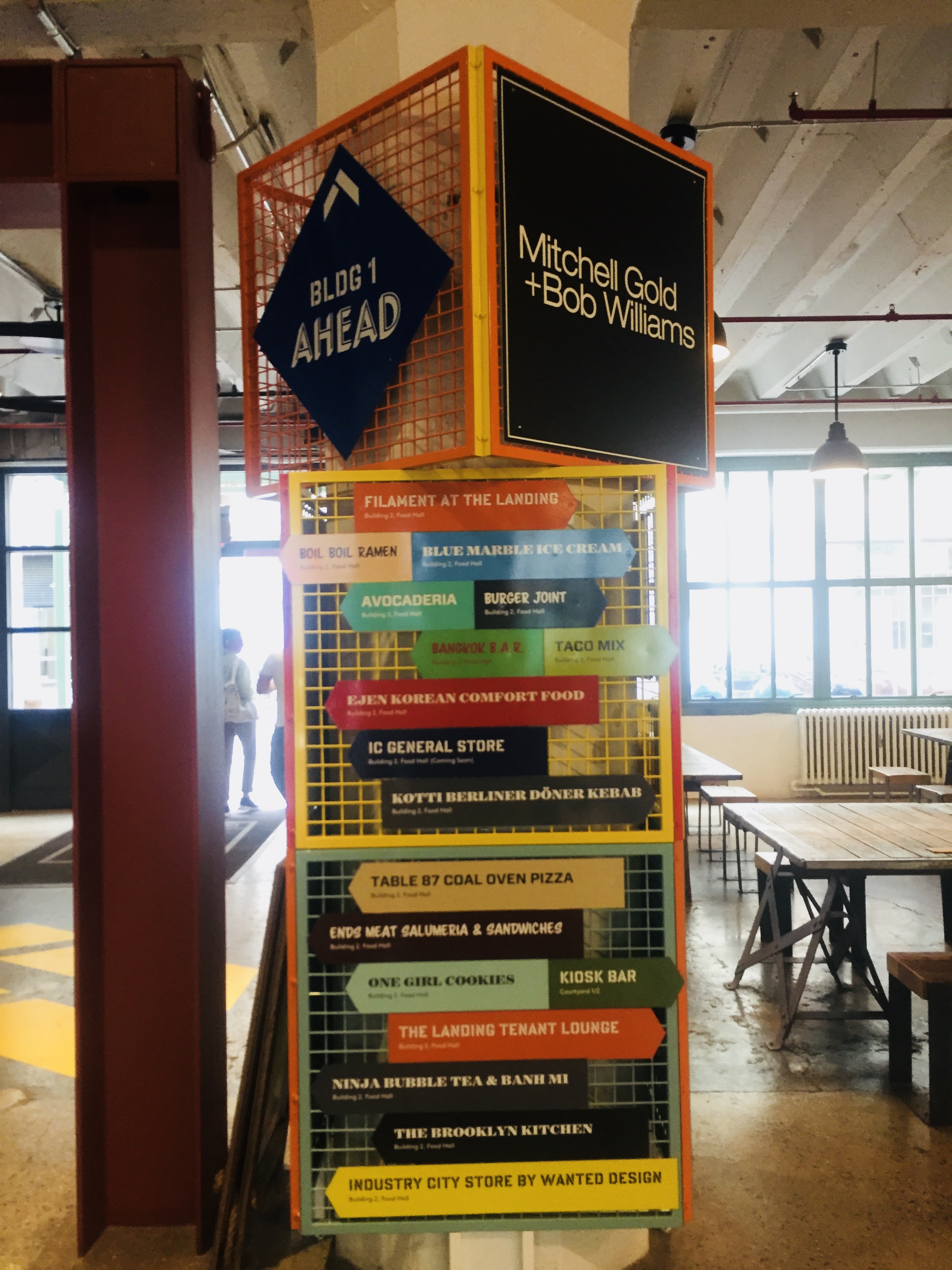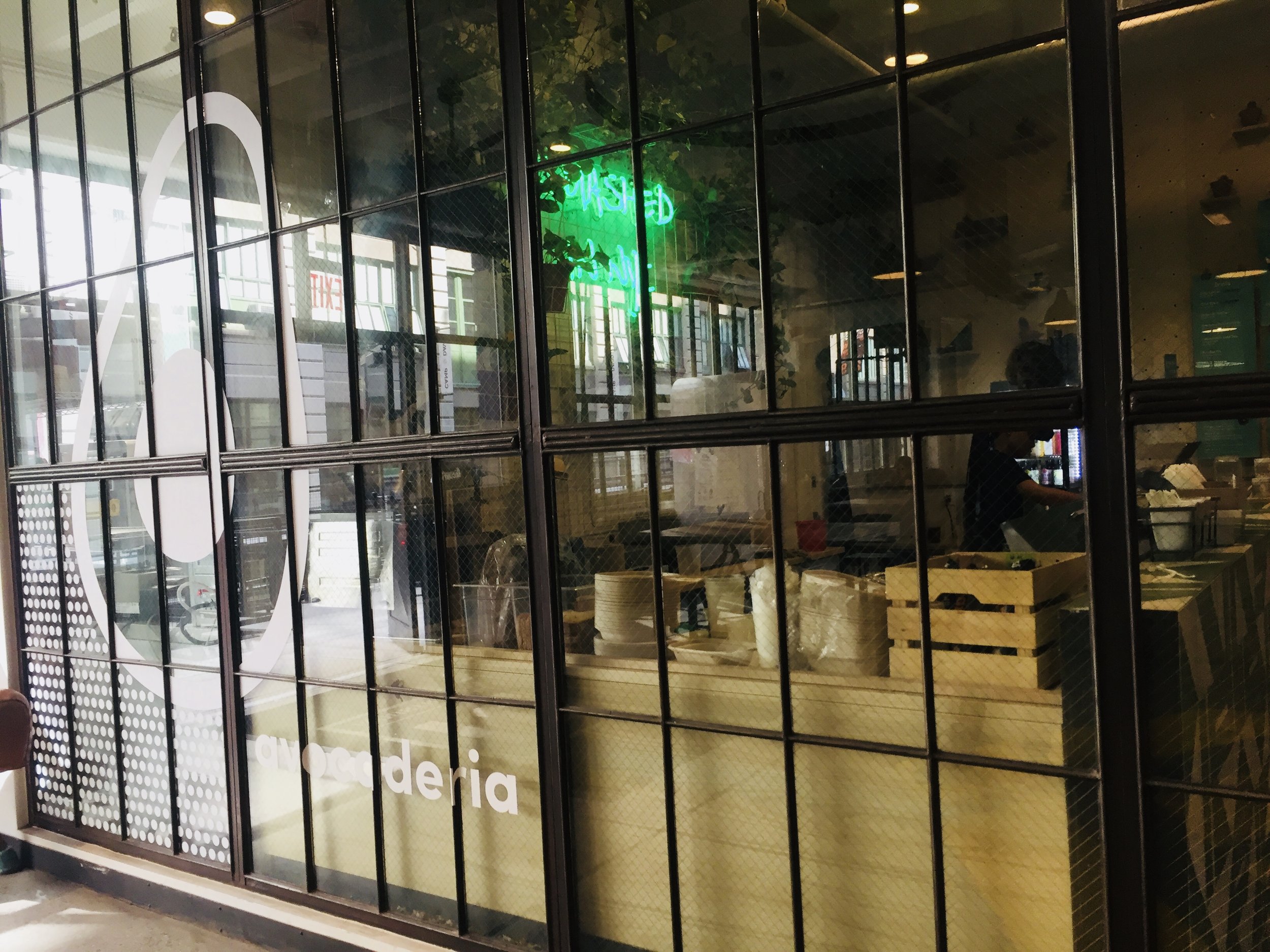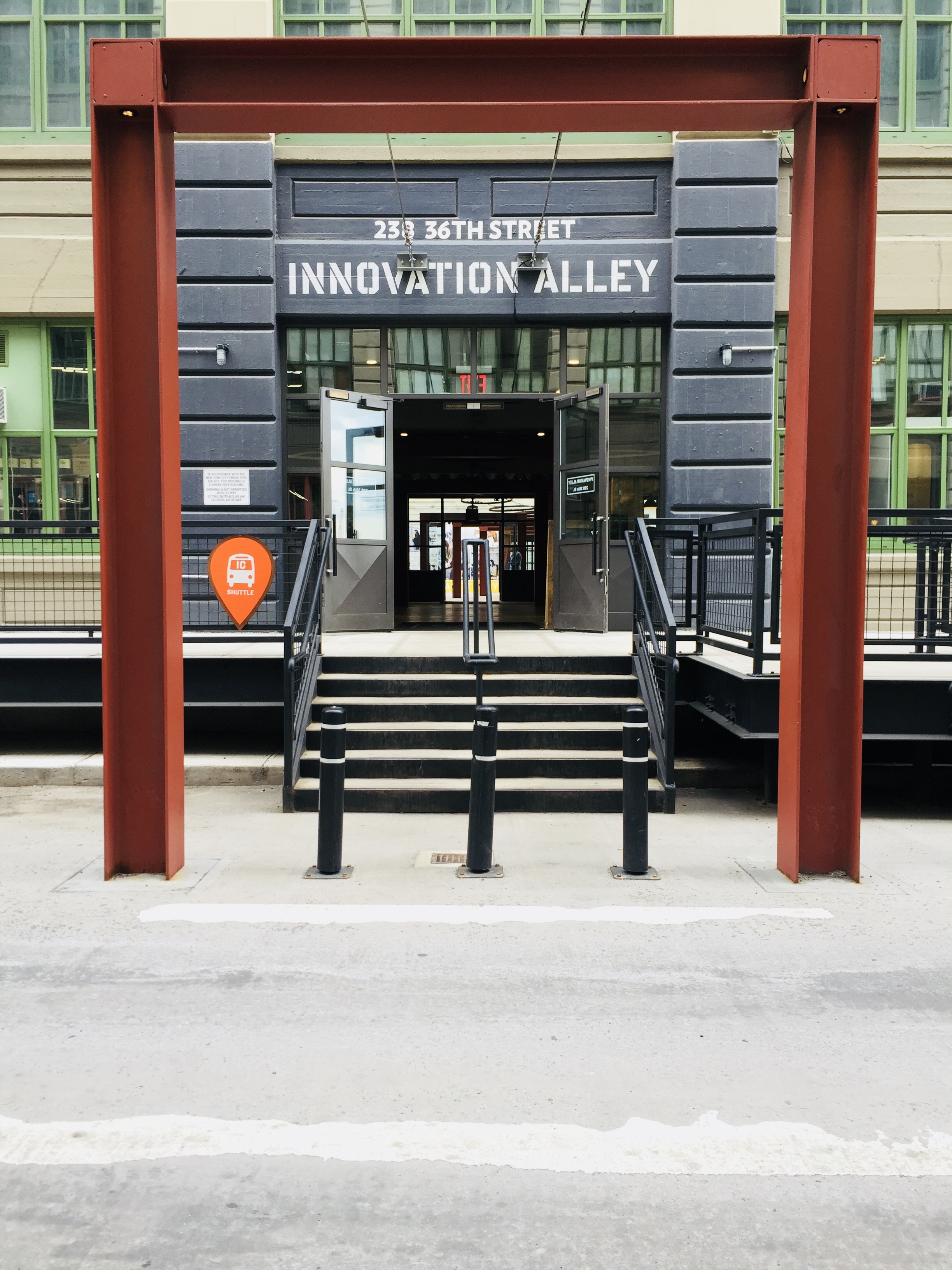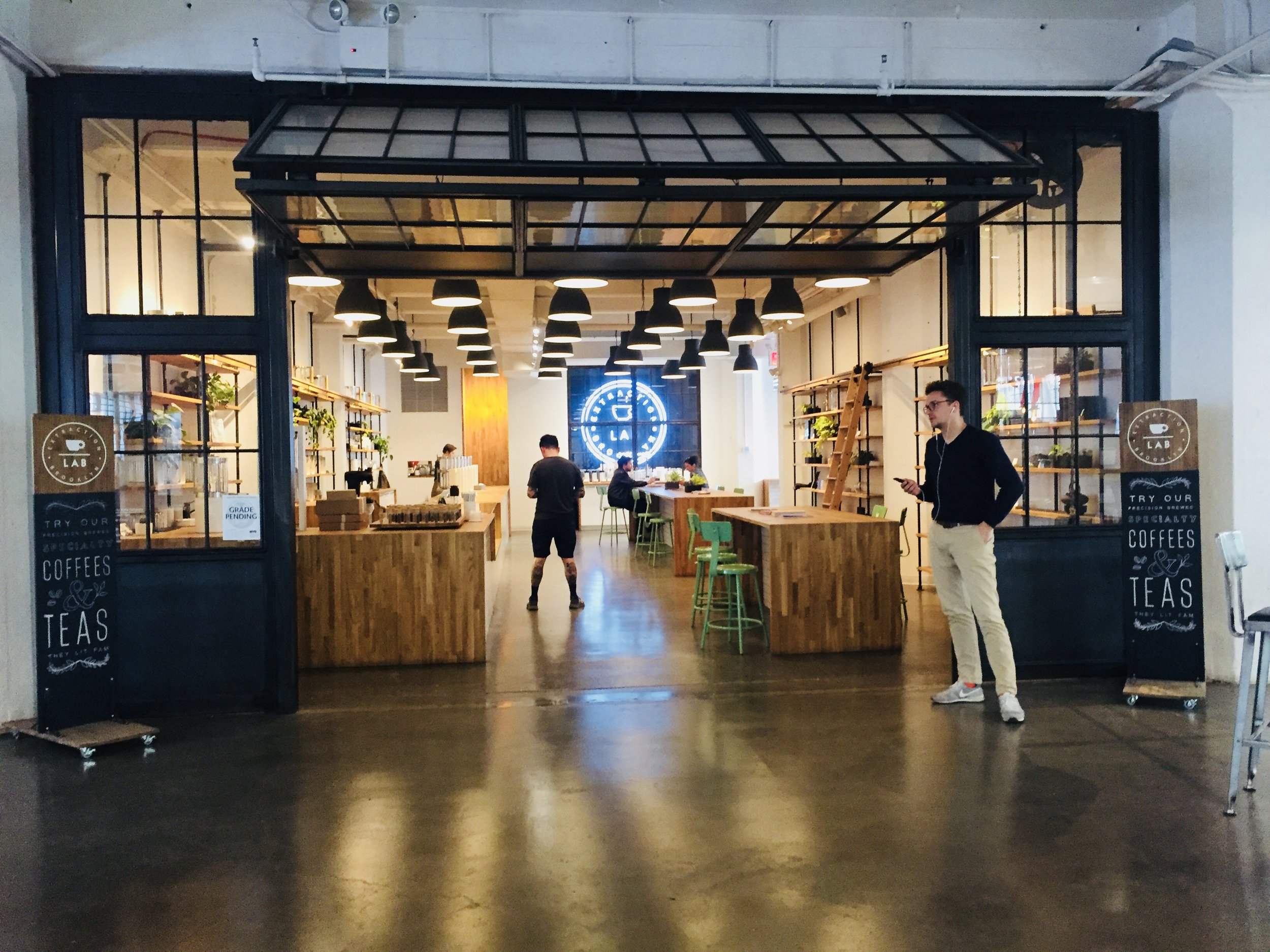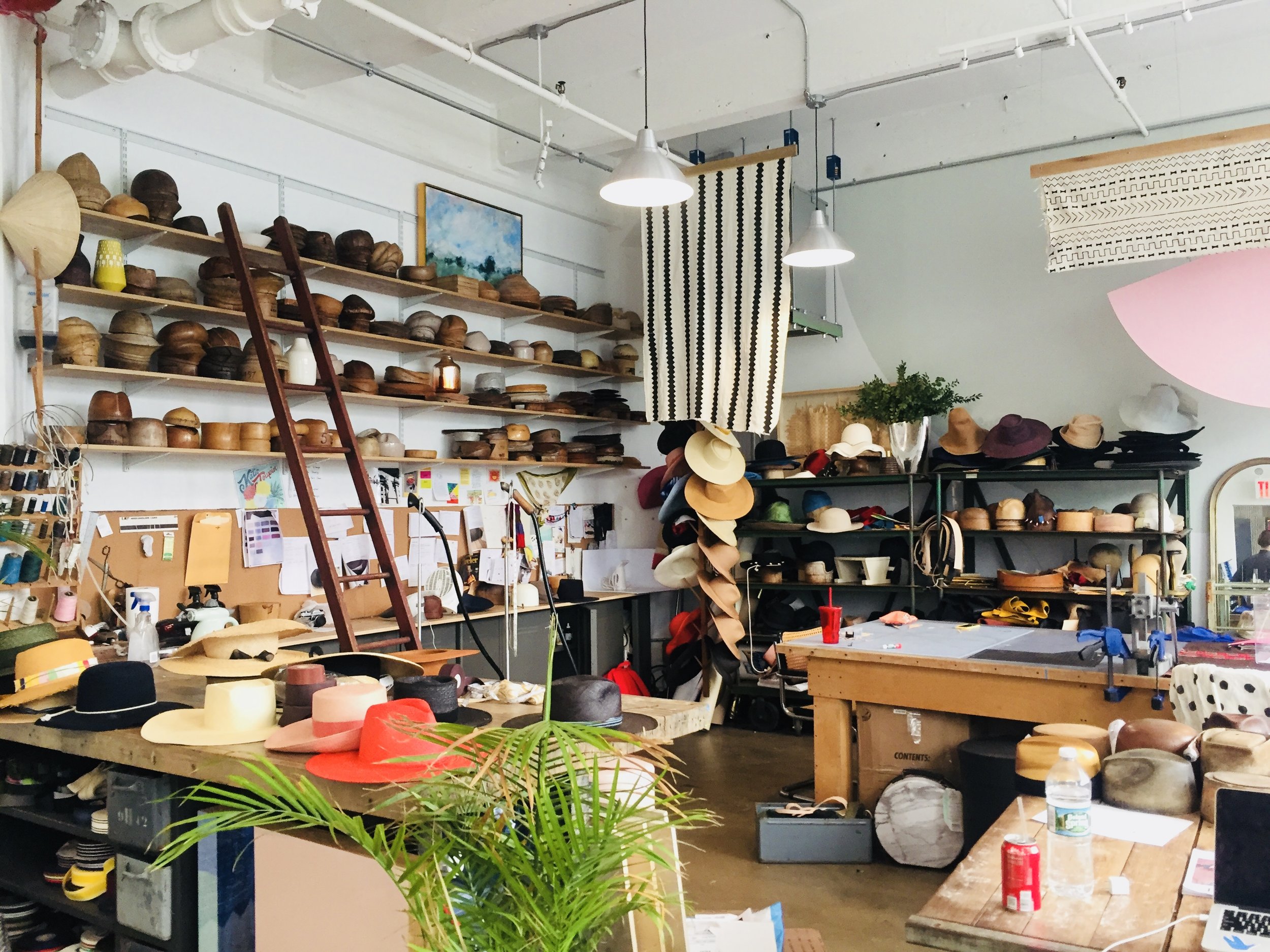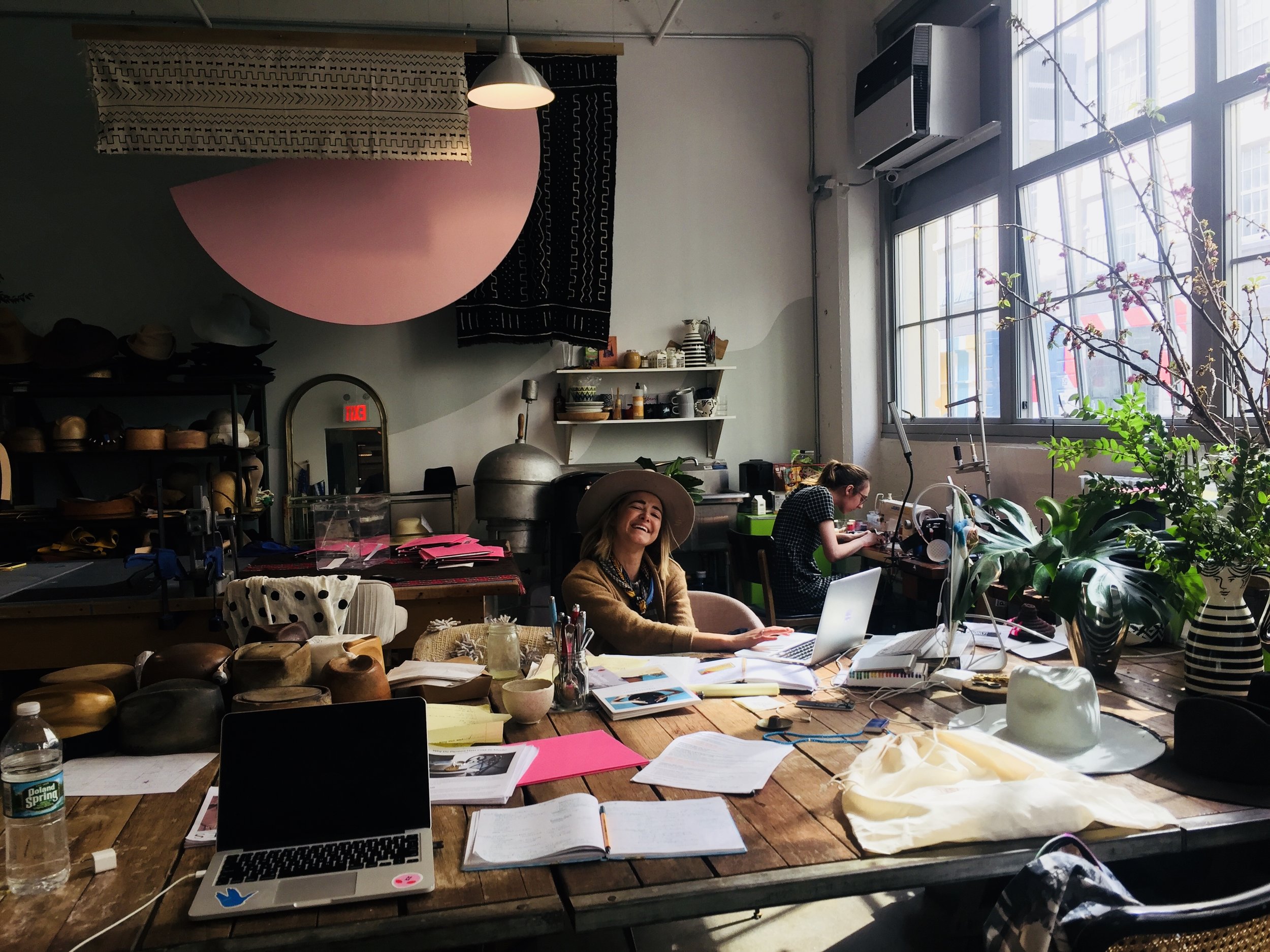Community Talks with Hugh Mason, Co-Founder and CEO at JFDI Asia
From Storyteller to Community Builder, Hugh Mason went from TV broadcasting at BBC London to building a lighthouse to the Southeast Asia startup community as the co-founder of JFDI Asia. Learn from his experience about why brands are conversations.
“Community building is like the turkey in the thanksgiving dinner. People get together to eat the turkey, but what really matters are the conversations around the table”. Hugh Mason
From Storyteller to Community Builder, Hugh Mason went from TV broadcasting at BBC London to building a lighthouse to the Southeast Asia startup community as the co-founder of JFDI Asia. Learn from his experience about why brands are conversations.
[PORTUGUÊS] Global Mentoring Group: Claudio Brito entrevista Lais Oliveira do Startup Genome (sobre Cultura de Abundância)
This is a snapshot of a long conversation. The world needs new communities which embrace the fast-paced changes technology has brought in the past decades. In short, we need more people building grassroots communities, from attracting to engaging people and making them stay.
Bate papo feito de São Francisco (CA), como Diretora de Desenvolvimento de Comunidades Startup Genome, com o Mentor Claudio Brito, da Global Mentoring Group, sobre os fatores que determinam o sucesso de ecossistemas de startups, especialmente falando sobre o que podemos aprender do Vale do Silício e a cultura de abundância.
[ENGLISH] Barcelona: Scaling Through Connectedness - Keynote at Startup Grind in Barcelona
This is a snapshot of a long conversation. The world needs new communities which embrace the fast-paced changes technology has brought in the past decades. In short, we need more people building grassroots communities, from attracting to engaging people and making them stay.
Keynote Presentation realized at Startup Grind Barcelona, April 2019, as Community Development Director at Startup Genome, presenting how Barcelona startup ecosystem greatest growth potential is around enhancing both Local and Global Connectedness.
[ENGLISH] The Power of Diverse Communities - Opening Remarks at Startup University, WebSummit 2018
This is a snapshot of a long conversation. The world needs new communities which embrace the fast-paced changes technology has brought in the past decades. In short, we need more people building grassroots communities, from attracting to engaging people and making them stay.
Opening Remarks at WebSummit 2018, as founder of Hacking Communities and Community Development Director at Startup Genome, presenting the economic value of diversity, based on research proving that more diverse companies and startup ecosystems achieve better financial results.
[PORTUGUÊS] Palestra Hacking Communities no CITIES 2018
This is a snapshot of a long conversation. The world needs new communities which embrace the fast-paced changes technology has brought in the past decades. In short, we need more people building grassroots communities, from attracting to engaging people and making them stay.
Palco do CITIES 2018.
Palestra Hacking Communities no CITIES 2018.
A palestra cobre os temas fundamentais do conceito Community Hacking, desde:
A ciência do Pertencimento, o porque pertencemos;
A arte do Pertencimento, como criar comunidades;
Passos simples e idéias para iniciar comunidades ou fazê-las crescer.
—
O CITIES é um evento internacional que levará você para uma imersão nos temas Tecnologia, Inovação, Empreendedorismo e Sustentabilidade. A programação contou com apresentação de palestras e trabalhos de atores importantes do ecossistema de tecnologia, inovação, empreendedorismo e sustentabilidade, além de arenas temáticas, feira de inovações e experiências de novas tecnologias.
O Congresso nasceu da necessidade de reforçar a importância do ecossistema produtivo e tecnológico na região, compartilhando inspiração, conhecimento, conexões, networking e oportunidades.
Números de 2018:
🔹5.500 visitantes;
🔹70 palestras nacionais e 6 internacionais;
🔹65 projetos na Mostra de Inovação;
🔹285 empresas na Rodada de Negócios, com expectativa de R$ 140 milhões em negócios gerados.
Crash: Hacking Communities (in a Nutshell)
This is a snapshot of a long conversation. The world needs new communities which embrace the fast-paced changes technology has brought in the past decades. In short, we need more people building grassroots communities, from attracting to engaging people and making them stay.
Here's an "in-a-nutshell" description of Hacking Communities in a Nutshell.
The world needs new communities which embrace the fast-paced changes technology has brought in the past decades. More abundance-minded, diverse and collaborative communities where individuals can feel safe to share and thrive.
In short, we need more people building grassroots communities.
We need more people hosting space and frequent encounters for others to build trust in one another and, so, feel open to collaborating.
But, how to build a community from scratch or grow an existing one? And how to make it grow organically? Because micro-management isn't sustainable. How to apply these concepts to building communities inside a company, around a place or about an idea? How?
The fact is: we are community animals. We should know this by nature.
We need practice. Hacking Communities means to "crack the community code," bringing in practical steps based on experience and incorporating new, live and changing practices from the online to the offline world.
Communities are the first and most important level of human organization. We are wired to belong because that's how we survived and excelled as a species. Language, as a result of constant interaction between people, allowed us to tell stories which inspire action.
According to author and historian Yuval Noah Harari, we do not use language "not merely to describe reality, but also to create new realities, fictional realities", and he adds that "as long as everybody believes in the same fiction, everybody obeys and follows the same rules, the same norms, the same values.”
Communities powered the first form of entrepreneurship and every revolutionary moment in history started from a belief turned into reality by a group of individuals (which grew organically). You could start one today. Or boost that one you already have.
It doesn't matter if it's about boosting collaboration in your company's organizational culture or enhancing the sense of community in your neighborhood to make it safer... Or building a thriving entrepreneurial ecosystem in your university, city or country.
You can grow a community organically, starting today. And that can change everything.
Best,
Lais (starter of this Hacking Communities community)
Making Places: From Ghost Town to Industry City
Around the 1960’s, the decline of urban manufacturing turned Industry City into Ghost Town. In 2013, something changed. Today, walking by Industry City you’ll find yourself surrounded by a vibrant community, well-designed spaces and trending F&B outlets. Learn how it happened.
Industry City open space
An industrial complex from the late 19th century, Industry City began as a monumental intermodal manufacturing, warehousing and distribution center in Sunset Park, Brooklyn.
Its 35 acres held consistent traffic of 25,000 daily workers and sailors throughout the 20th century, which turned Brooklyn into a major international seaport. It became relevant even before the Statue of Liberty popped up right in front of it, granting it a generous view.
However, around the 1960’s, the decline of urban manufacturing turned Industry City into Ghost Town.
In 2013, something changed.
Walking by Industry City, today, you’ll find yourself surrounded by well-designed spaces and trending F&B outlets.
A favorite organic ice-cream brand. A shark-tank winner. A coffee shop which sells the art and science of coffee making, along with your usual cup. A chocolatier. A vibrant coworking space. A hat maker. And more. According to its sources, in the last two years, the entire space “has leased more than two million square feet of space.”
Currently, it hosts 4,500 people and 400 companies.
What happened? Let's take a look.
A Vibrant Crowd
A US$1bi investment led by Belvedere Capital and Jamestown kickstarted the movement of revitalization. The wide spaces, previously used for manufacturing, turned into beautifully designed office spaces, retail and F&B outlets.
One of its tenants, Camp David, is a “mindfully-designed, light-filled co-working community spread across 40000 square feet and three floors”, as very well defined by Design Boom, who rents an office at the space.
I spoke to Erum Khan, Co-Founder and CEO of Soundmind Intelligence Inc., a voice AI startup for senior living, who chose Camp David as her headquarters.
For her, it provides more than an enticing work environment, a community where she can have serendipitous encounters over coffee, bounce ideas with domain experts and even look for talent. "It's more than just desks, it has real innovation vibes, she states.
Pictures of Camp David
Connor Doyle, Membership Manager at Camp David, gave me a generous tour around Industry City and shared a bit of its story as we strolled around. He explained that the space started to get populated around 2014. It grew from a mix of tenants who tool over different areas. Storefronts, F&B lots, and offices.
“The crowd here is predominantly creative. From architects and designers to entertainment companies and digital agencies, including startups,” he explained.
Why Open Spaces?
Walking through the “Innovation Alley,” a corridor which cuts across the six buildings already developed, you’ll find elegant outlets and wide open spaces in between each building.
Well gardened and often decorated with fairy lights, the spaces between are designed for public activities to take place. From sunset yoga sessions to music concerts, these offer the refreshing feeling of a park in the city. People you can sit down for a chat on a bench, attend a concert or play ping pong with strangers.
Pictures of open spaces in Industry City
The whole floor plan offers generous open spaces, between buildings and inside each.
It seems designed for people to bump into each other and make friends.
Broad public areas also take place inside the buildings, with elegantly designed lounge areas with bookshelves, couches and long tables where you can find individuals working on their computers or catching up with others. The spaces also can also cater for private events.
All these open areas take up potential "rental space." In the mind of several real estate developers, that means a waste of money (in the price per square feet measure).
Why does Industry City allow such waste? Or is it an investment?
“That makes people interact here and enjoy quality time outside their offices," says Connor, from Camp David. He adds: "when they participate in the community, they feel like staying longer.”
Undoubtedly, the ping pong table takes space from a few office desks, which means you are not monetizing on those.
However, it allows individuals to come for coffee and have a serendipitous ping pong session with strangers who might become friends. Eventually, they could become business partners.
Industry City demonstrates that space optimization isn’t about profiting from every inch of your space. It's about making it livable as a whole.
It is a concrete example of a holistic approach to real estate, where business and design share one goal: livability.
The result is concrete in the number of jobs created, which “increased from 1,900 jobs to 4,500” according to Industry City’s CEO, Andrew Kimball in an interview with 6sqft. Kimball adds that “$125 million has been invested in the campus and provides tenants with five acres of open space to socialize”.
Here to Stay
A robust tenant-first philosophy is the foundation of Industry City’s success. In the same interview, Kimball explains that tenants “create the environment that draws others; they’re the reason to drive investment, and they are writing a narrative that tells the story of a new economy.”
Besides of different industries, each tenant shares a taste for innovation and creativity, turning the space into a lighthouse for a variety of like-minded companies and individuals.
Amongst its F&B outlets, you can find the very trendy Avocaderia, given $400,000 in February as a Shark Tank winner. In the office spaces, you’ll find that ClassPass, a well-known startup, has set base on Industry City, purchasing a studio from where they will live stream classes to their users.
Tenants from Industry City
Back to manufacturing, you might bump into Teressa Foglia's beautifully designed den. A hat designer and maker, her office reflects the passion for uniquely crafted pieces.
Teressa's shop caught my eyes.
Pictures of Teressa Foglia's office
Connor offered an intro to the founder. I walked shyly into the shop, as he introduced me to this bright young woman working hard and focused on her desk. She stopped for a minute to greet us with a bright smile. It felt like we were visiting friends.
I asked, "why Industry City"? She explained that, in 2017, she decided to venture into her passion and found, there, a place and a community that captured her creative spirit.
“It feels like an adult college campus for me; it’s like we’re family,” says Teressa, founder, designer, and maker of hats.
“I still live in West Village, Manhattan, but I’d move here if I could; I even slept in my office yesterday," she adds, pointing us to the couch by the wall.
For those who aren’t familiar it, West Village is an acclaimed neighborhood, famous residence to artists, designers, creatives and, of course, for Carrie Bradshaw (from Sex and The City).
The fact that someone like Teressa feels like moving from a favorite spot in Manhattan to Industry City, Sunset Park, Brooklyn, is a relevant indicator that it has become a success story.
Making a Place
From a former ghost town in Brooklyn to a place that is stealing hearts from West Village tenants. In only four years.
What is the secret sauce to Industry City?
When people decide to stay, it means success. We are talking about places, but we could be talking about customer loyalty for consumer brands. Same principle.
The best marketing strategy isn’t one which only attracts people to a place (physical or virtual) because it is cool or Instagrammable. It is one which goes beyond attraction, giving them consistent reasons to be back. These reasons vary. It could be a trendy coffee shop, great music concerts or yoga sessions happening every weekend, or even the fact you have friends staying there.
One day, people decide to come and stay. That defines success.
You don’t need to be a real estate expert to agree that it takes a considerable commitment from someone to choose a place for long-term. Either as commercial or residential location.
The place where you stay defines you. Your address becomes part of your identity. Good tenants come with a ripple effect. They serve as a lighthouse which attracts the right people, drawn to the same values.
It is a big win that Teressa Foglia, ClassPass, Avocaderia, Soundmind and several trendy brands of creatives, startups, and manufacturers chose Industry City as their headquarters.
As a relatively new development, the question remains on their success depending on the very tenants who are taking over new office spaces and storefronts.
The future is promising, but always uncertain. Time will tell.
For now, I can’t stop thinking that Industry City was born as a thriving place which turned Brooklyn into an international reference. It seems to be living by its name, again.
Reference Links:
Industry City: https://industrycity.com/
Camp David: https://www.thecampdavid.com/
6sqft interview with Industry City CEO, Andrew Kinball: https://www.6sqft.com/the-success-and-future-of-industry-city-as-told-by-its-innovative-manufacturing-tenants/
Design Boom article about Camp David: https://www.designboom.com/design/camp-david-brooklyn-coworking-industry-city-11-09-2017/
Teressa Foglia: https://teressafoglia.com/
Soundmind Intelligence Inc: http://www.soundmindinc.com/
WORKSHOP | Community Hacking: Re-Coding the Science of Belonging
Learn concepts from customer development, lean branding, and content design to build a raving community of users and build a strong team.
DELIVERED AT THE IP SMART 2018: CREATE
ISKANDAR PUTERI, JOHOR, 2018
DESIGNED FOR: 180 minutes
How to bring people together around a product, place or idea. Learn concepts from customer development, lean branding, and content design to build a raving community of users and build a strong team.
Communities have the power to move people. What if you could identify and gather all the people who genuinely care about what you’re doing? It is relevant if you are in business, looking to grow a loyal customers base, build better teams or become an industry leader.
TALK | Hacking Communities: Cracking the Code of Vibrant Communities | 2018
Creating community is at the core of the coworking movement, but how well do we really understand how it works? Based on insights from dozens of interviews, Lais will unpack the elements needed to attract, engage and retain a vibrant community.
DELIVERED AT THE COWORKING UNCONFERENCE ASIA (CUASIA.CO)
PENANG, 2018
Creating community is at the core of the coworking movement, but how well do we really understand how it works? Based on insights from dozens of interviews, Lais will unpack the elements needed to attract, engage and retain a vibrant community.
The Door Guy Matters: Insights On Building Community Through Spaces
Choices are simple: have the right door guy (read below to understand what “right” stands for) or have none.
As I write this message, I am hanging out in the lounge of an incubator after 43 minutes trying to break through the building — regardless the lack of interest from the door guy in helping me out .
I’ve been to over 100 “entrepreneuship centerish” spaces.
Now I’m hanging out in one in Brazil, which made me conclude the importance of a player generally neglected by such places — be it an accelerator, public entrepreneurship center, a corporate incubator or a coworking space.
The doorguy.
Unless the building’s architecture is one of those without a main entrance, you need a door guy which expresses the culture you want in your space.
Cohesively.
Choices are simple: have the right door guy (read below to understand what “right” stands for) or have none.
The harm of having the wrong Door Guy can be as huge as causing someone who’d be a great mix in your space to turn his back and leave your building even before entering it.
TL;DR. A community center aims to allow connections which may result in exchange of information, learning and resources, read: collaboration.
For such exchange, some things matter — and the Door Guy impacts in but one, but very fundamental: who’s in. And who’s in will define how they interact — and then, other factors play in. Let’s take a look.
1. WHO’S IN: CURATION & OPENNESS
Before anything: of course you want a high potential, talented and curated crowd to join your community — but curation doesn’t contradict openness.
You “select” your crowd by the invisible filters which attract people to your building — not by making it harder to get in once they are at your door. I know you’re talking about a culture of hustlers — you want that guy who hacks the system to get in — regardless of the grumpy door guy.
But dude.
If you are a centre of entrepreneurship, most likely the dudes who are willing to walk in are not the typical guy who’d break in a “free pizza party”.
Weirdos trying to “invade” entrepreneurship hubs are generally connectors, investors, media, other founders, potential hires… People who could add value if you give them the chance to introduce themselves.
Having the wrong door guy is just like opening up a landing page with a big promise in the headline, but no call to action.
Not even a box where to leave your email, not a contact form. Like: people want your product — but you make sure there is no way they click through. Now make it worse. Imagine there constantly pop-up message jumping in the screen to say: “you’re not allowed to use this page”.
That’s the wrong door guy. It all boils down to loving your user.
Some people don’t. So if you don’t… Maybe managing a building filled with people isn’t your game.
You better leave your doors open for anyone who’s into creation and entrepreneurship and very likely, 1 out of 10 will be a worthless dude — but most of them will may be relevant to what the entrepreneurs need.
Trust serendipity. ;)
2. HOW THEY INTERACT. “FLOORS DON’T LIE”.
When you aim to become a lighthouse — specially when your building isn’t a “pass through” Starbucks location, but rather a destination, it is important that your entrance is inviting.
Architecture matters. But your door guy can spoil the scene.
The entrance should be inviting and contain hanging out areas, like a lobby which allow random people to collide as they arrive in the space.
If you promote a culture of sharing, you should start promoting that from the entrance of the building, making it easy to access and navigate in.
If your floor plan doesn’t deliver what is expected from the community you are trying to build, specially from the entrance, you’re starting by educating people against the actions you expect them to follow.
Yes, you must have private offices where people focus and get shit done, but here’s the thing: any office building does.
A community space should allow users to navigate easily and follow one more call to action: interact. But they won’t , unless 1) they get in and 2) there are areas where they can freely meet people: an open space, square, cafe, lounge, lobby, etc.
From this — magic can happen.
Proactivity, openness, collaboration. If I’m received by a dude who says I’m not worth their wifi (like he’s talking about Thor’s Hammer), I’ll get inside and behave like an underdog who “doesn’t belong”.
Instead — if I am free to just walk in OR if I am received by this dude who welcomes me in, asks me where I’m from and demonstrates interest in what I do and how he can help me — I immediately turn the “hey, let’s go make friends and help each other mode”.
3. FINAL THOUGHTS. GIVE > TAKE.
First impression matters, and that’s about the importance of the Door Guy.
Overall, the idea is: how welcoming is your space to visitors, from a digital nomad who’s trying to get into the local scene to a local student who wants to learn more about startups? As a community builder, your role is to attract the right people — and give them space to do stuff, making sure they understand how they can use it to everyone’s benefit.
Start from building a culture of trust by believing that people are good, if you just let them be. If I can add an element of giving trust and offering a very welcoming environment, here’s a final tip to add on the Door Guy:
3) Give free wifi for guests. We’re hosting geeks.
But that’s a topic for another text. ;)
Not Just Another Starbucks: Part 2 of Place-Making: "Like SEO for Real Spaces"
Either it is a real estate development or an online marketplace: you need content to drive people to your site an unique value proposition which makes them stay.
Either it is a real estate development or an online marketplace: you need content to drive people to your site an unique value proposition which makes them stay.
Your online marketplace needs “eyeballs”. The real estate / brick & mortar businesses need “foot traffic” to get started.
Coworking spaces are just one format of content which both attracts, engages and invites people to stay: which is what makes it sexy.
Previously, real estate developers were used to the basic retail content plan: besides all PR, Marketing, etc, they would strategically place "trust brands" to attract people there. For the purposes of this article, Let’s call it the “Starbucks” strategy.
It sure pays more than rent: with brand, trust, traffic and, bonus: a landmark (like when you tell your friend, driver or blind date: "I'm at the Starbucks on 1st floor").
The "Starbucks" concept works specially well when high foot traffic is already engineered into the space: such as train stations, airports, downtown malls - places where people go because they have to, not as a choice.
The Starbucks strategy is "borrowing trust" by curating branded tenants which act as a good reasons for people to hang out there.
It has been working, somehow. Except that: what if there’s a Starbucks everywhere?
Certainly, if talking about spaces which inherit high traffic from their surroundings, that's none of their business (because traffic is an added value). But when talking about new developments and building lifestyle ecosystems from scratch, you must add value in order to get traffic. Specially if talking about new or challenging locations: the typical "destination" kind of space.
Customer behavior has changed. The reason why people decide to stay, work and live at certain place has changed and it’s more like what happens in the online world now.
From retail to office and residential spaces, people are free to move around and choose a space that gives them a life experience, beyond the basic services provided.
People want more than food, even though food remains as one of the best lead magnets in real estate (specially in Malaysia, I'd say).
You may say that people want “entertainment, fun, art” and what all of it really means is that real estate overly used word: “lifestyle”, which has become a buzz word, even though it very well defines what people look for before deciding "where to stay".
Why Community (Belonging) is the New Black
Lifestyle literally means a “way of living”. Literally, people want to feel and be perceived in a certain way.
To a young business man, it may sound glamorous to share a picture his desk overseeing the city, taken from his office the top of high rise building. While to a young creative hipster, she might feel happier sharing a perfectly angled picture of her brunch at the trendiest cafe in town, where she works from.
Communities are driven by shared identity and interests, which define your choices of lifestyle and consumption habits. It ain't about ethnic or social divides, even though the demographics obviously affect what people like, say and do.
Lifestyle is, essentially belonging.
Belonging is about identity, which is about branding - which can be perfectly designed by the kind of “content” you put in to attract the right people.
That’s where place-making comes about: as the art of designing, creating and curating relevant content to turn spaces into places.
Place making is about adding identity into spaces and attracting a branded community into it, as a way to build a sustainable and loyal base of customers who will define themselves as part of your place - and will act as your main marketing building up a sustainable, community-driven, self-populating space.
Cutting the long story short: putting in a Starbucks in there is no longer a reason why people would stay at your place.
People want spaces they can relate to, where they can belong to and feel ownership about, at the same time.
Summing Up: Content is The Engine of Adding Value to Physical Spaces
Community building is basically “creating excuses to bring people together”. A specific space is implicit to this concept.
Content is the value you add in order to attract, engage and retain people to a space.
There are different types of content for each stage of a development - and what a place maker does is to identify the communities you are targeting, understand their needs and wants and build relevant content which will attract those people over time.
Up next, we will bring up successful cases of place making which got translated into different formats: creative retail, art spaces, making and coworking spaces, you name it.
Note: The purpose of this series is to find solutions for space optimization and valuation through a scalable and replicable system of building communities which can populate and add meaning to an ever-growing number of new developments.
The same knowledge can be applied to small businesses which are brick & mortar (coffee shops and retail in general).
Up Next:
- Great Examples of Place-Making in KL and beyond
- Interview with Nani Kahar (Publika) and others
- The Science of SEO to Real Spaces: Attract, Engage, Stay
- Engineering Serendipity: The Art of Making people feel Lucky at your Space
- Doing it yourself: Content Design, Creation and Curation
Previous Posts:
Place Making: “like SEO for Real Spaces" (Part 1)
Increasing property value through content design: post #1 of a series where about new trends on real estate from a community builder point of view.
Increasing property value through content design: post #1 of a series where about new trends on real estate from a community builder point of view.
You notice you are too deep in the digital scene when your metaphors use the online world to explain things in the "real" one.
There's a clear parallel between the way we do digital marketing and the way the real estate industry works: and here's the explanation of why creating content is like the art of building "lightouses" which matter both for online and offline spaces.
Ok, What is Place Making?
If you've been looking a bit into the startup or real estate scene recently, you might have heard all the buzz about WeWork. Every developer is looking to that model with curiosity, but mostly: no one really understands why, how and if they should add that “coworking/coliving” space element to their brand new development.
What they are looking for isn't a coworking space, but what it means: people, brand and leads pipeline: and there are multiple ways to get this, beyond coworking spaces.
They are actually looking at place making. But you probably never heard of it before. Before I go into showcasing success cases that tell what place making is about, let's understand what it is: using the SEO metaphor.
For the impatient ones, TL;DR:
Place making is all about attracting and engaging people to a specific location in order to achieve a certain goal, most of times related to retail (consumption), rental (space optimization) or increasing the value of the property. Sounds familiar? (:
Place Making is Like SEO for "Real Spaces"
Content is the reason why we go somewhere.
Talking about physical places: we go for meetings, dinners, parties, shopping, coffee. If you are Malaysian, you go as far as 10km to get the best Nasi Lemak in town. For virtual places, people go to read an article, browse for fashion accessories, share a picture of their latest brunch or watch cat videos. Whatever it is, content is both the excuse and the value proposition that drives people to places.
In the context of this article, content means "anything that draws people to a specific location": online or offline.
If you aren’t familiar with the SEO, it stands for Search Engine Optimization. Google uses content relevancy as one of the key measures to prioritize search results: for them, it's about how fast people find what they're looking for.
Great content works like a lighthouse. When your content is aligned to your value proposition (products/services), you are doing more than marketing: you are helping people find what they are looking for.
That's mostly all that Google's Search Engine cares about.
And if Google starts to find that you are helping people solve their problems, YAY! Now it’s more likely they’ll keep you positioned at the “top of searches”.
For instance: content means much more than "articles" and "videos": these may be hooks, specially if you are an e-commerce or marketplace. You need content which engages your leads and makes them stay: converting them into customers. The variety and quality of items available at your online commerce is likely to be the most important variable in order to reduce your bounce rate.
How Does Content Work on Physical Spaces
Drawing a parallel between the online and the offline world: an article or video may attract traffic to your website, but the value you deliver is what makes them stay.
The same way, an event or festival may attract people to a physical space. But what would make them stay (consume, work or live at your place)?
Place making is about transforming empty spaces into places where people want to go to, engage with and stay.
It takes care of multiple aspects of space management, from design to programming.
Taking it to startup terms, place making understand that UI/UX is also an element of value delivery and that you must design spaces purposefully, to fit both the activities to be hosted by the space (functionality) and the community to be hosted in there (brand).
Making Places from Scratch
At the start, SEO is more about the relationships you build, than about content itself.
When you are new, you must go where your leads are, relying in the existing networks and places where they are to let them know about you. In fact, networking is an ever growing work, even after you build your own community of followers and customers.
That's what we call Community Building.
Building community is exactly the art of generating valuable content to attract people to one place, while weaving the network of people who will facilitate it's distribution.
Overall, the rules of attracting people from online and offline sites follow 3 principles:
- Empathizing (aka design thinking, creating something that people want)
- Giving First (aka generating relevant content, based on your users wants/needs)
- Going Where They Are (aka growth hacking)
What's Next? Part 2:
Content is, essentially, the value you add in order to attract, engage and retain customers - be it relating physical of virtual space.
Next, we will talk about the engineering of "belonging".
We will talk about why the hype around spaces related to startups, coworking, creativity hubs, innovation spaces and so on. Exploring the core of it, rather than the shape, to understand what real estate really needs to build.
Next Up:
- Why Not "Just Another Starbucks"? What Has Changed > Read Now
- Great Examples of Place-Making in Kuala Lumpur, Malaysia
- Interview with Key Place Makers in KL
- The Science of SEO to Real Spaces: Attract, Engage, Stay
- Engineering Serendipity: The Art of Making people feel Lucky at your Space
- Doing it yourself: Content Design, Creation and Curation










